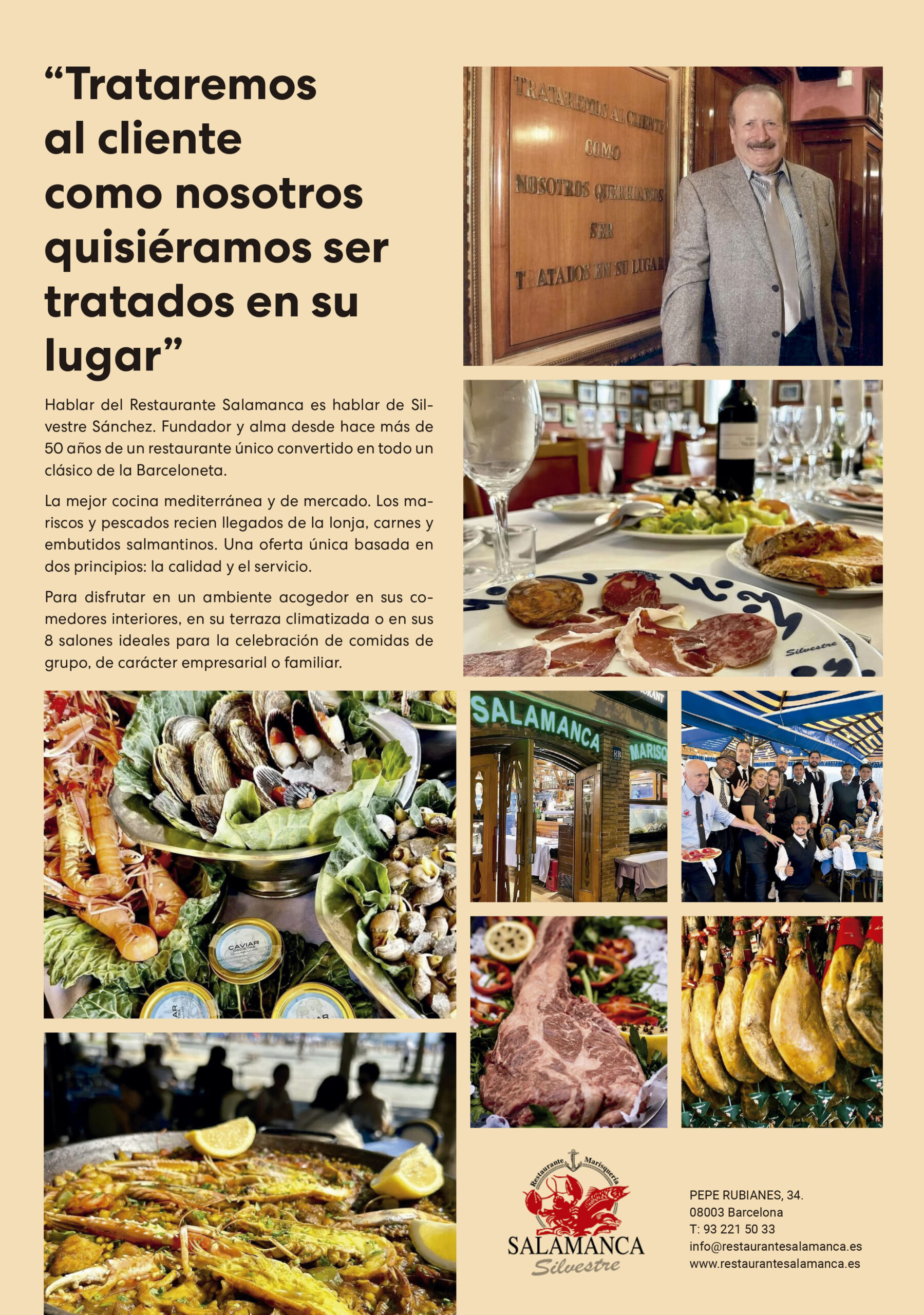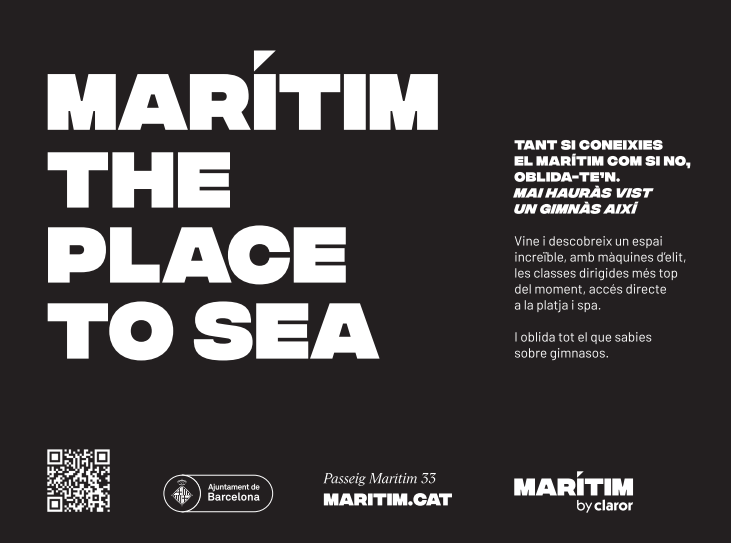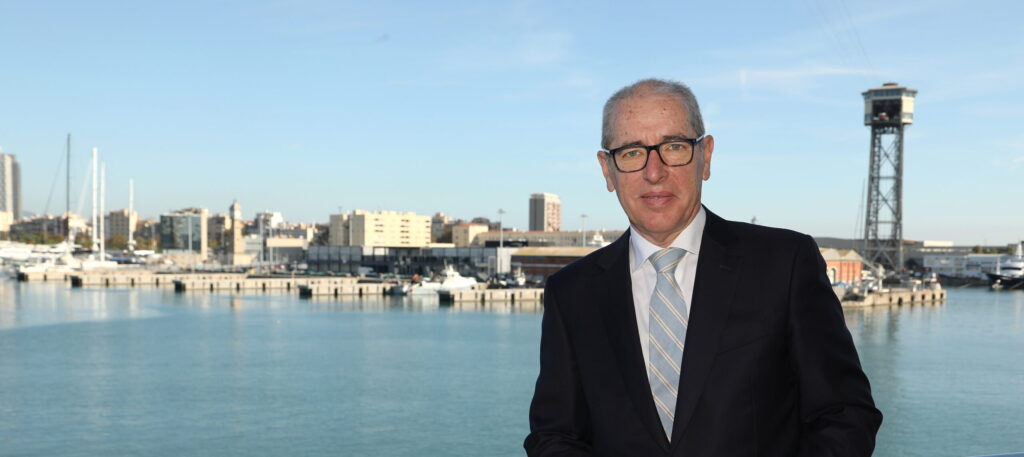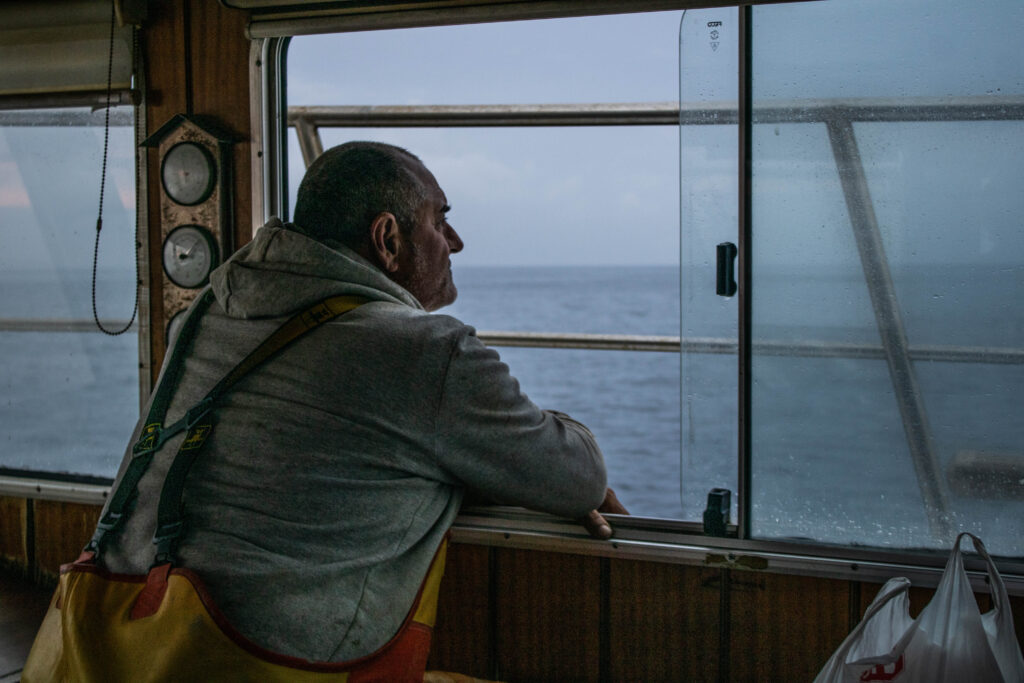War video reporter
When his classmates wanted to be footballers, successful businessmen or, some more daring, firemen, the little Gallego wrote ‘Hello, I am Raül Gallego and I have come back from war to explain what is happening in the world’. Almost 40 years later, Raül has returned from many, many wars to explain what happens in them. That is why he has just received an International Emmy a few days ago for his series ‘Point of No Return’.
-Vocational.
As a child I was fascinated by Indiana Jones. Adventurer, traveller… I wanted to be like him, but a teacher told me that archaeology was spending the day cleaning ceramics or coins with a brush in one of the ruins of Tarragona. How frustrating!
-The need to search for a new idol.
I found it in Miguel de la Quadra Salcedo. He had been a journalist and now he went through the jungle dressed as an explorer and came out catching an anaconda . He was the closest thing to Indiana and he was real.
-But the only thing that attacked the Ruta Quetzal were mosquitoes.
My fascination with conflicts has always been there. It’s strange because I wasn’t a brave kid. I was passionate about Tintin, the epic wars, history…
-Until you decide to take action.
I had to see if it would do the trick. When I was still a student at university, when I was about 21, the war in Kosovo broke out. I proposed going to a production company but the project didn’t work out. So I decided to go on my own to El Aaiún (Western Sahara).
-Why the Sahara?
Because I happened to meet a young man from there on the train one day and he explained to me about the conflict, about the Polisario Front… And he complained that nobody was talking about it.
-Well, there goes young Raül.
With the face of a child, a backpack, a second-hand camera and a video camera that I bought at the 7 Puertas bazaar, I showed up in the middle of nowhere. I was supposed to contact the incognito Polisario Front members in a super creepy brothel, and after several days the meeting was cancelled because they claimed that the Moroccan police were suspicious, as I was the only foreigner there.
– Left out and with no report.
But suddenly a young man with a black turban and a covered face appeared to me, speaking Spanish, and offered to show me what was going on there. He dressed me in a turban and we visited it all by bike. When I got back to Barcelona, I tried to sell the report to La Vanguardia and they told me that the Sahara was out of the question now. I ended up writing a short story in a local fanzine by my friend Albert Manzano.
-But you discovered that this was your forte.
It was a first adventure, totally unconscious but exciting. Yes, it was the one I wanted.
Then I went with a friend to the Macedonian War, the last Balkan conflict, and also to Palestine in 2001 to take photos. Until 2002, when TV3, where I had been an intern, sent me to the West Bank and I lived through the second intifada, including the massacre in the Jenin refugee camp. I was one of the first journalists to go in.
-This is getting real .
In 2002, TV3 sent me to help the Jerusalem correspondent Esteve Soler. I went there for three years, including covering the Iraq War.
-Dealing with the top of war journalism.
I lived with people from Reuters or Associated Press (AP). Many idols of mine. What’s more, being the youngest, they looked after me, advised me. Let’s say they sponsored me.
-TV3 was going to be too small for you.
The options at TV3 were limited and coincidentally Associated Press (AP) offers me a job in Brussels.
– Associated Press Press is the top.
But it was Brussels – not action – and I turned it down. They were very surprised. A kid saying no to Associated Press ! But they called me again in 2005 to offer me to go to the Bangkok headquarters to travel around the world. I was there for 9 years and became one of the main video journalists for AP worldwide.
-Now, action.
In the sector, AP has a reputation for being a “ tough” agency . One proof was the death of Miguel Gil working for them. They sent you to the front line a lot of those who went, were a totally anonymous journalist. The images you filmed are broadcast all over the world but your name never appears. It was 9 years of constant adventure! Asia, Africa, the Middle East, Burma, in Afghanistan with the marines …
-Associated Press is also coming to an end.
I thought I was always doing the same thing and if I stayed I wouldn’t evolve professionally. I worked for more than a year at Channel 4 in England, until I went freelance and in the summer of 2017 I returned to Barcelona. Coinciding with the attacks on Las Ramblas and the Process, for a few months I collaborated with the Washington Post. I also made documentaries on my own. I worked on an environmental project for the Global Wildlife programme. With them, for example, I did reports on rangers fighting poachers in Africa. In 2019 I covered the Hong Kong protests.
-Antonio Vaquero of El Periódico highlights your empathy.
Sometimes they tell me that it is the first time they perceive that a journalist is really interested in them, in their situation. They don’t just notice that I’m looking for something, but that I go because they are the ones who explain it to me. But we don’t think alike.
-You live with them when you turn off the camera.
Yes, we talk, we even disagree, but always showing me how I am as a person and not just as a journalist who is only going to film what interests him.
-How do you prepare a report?
First you do research on the conflict, logically. You work with local people who guide you and help you a lot. It’s a mixture of everything. I like to learn a few words in their language because, even if you are accompanied by a local translator, it gives you more proximity.
-But the danger is real.
I had journalist colleagues and friends who have died. Also soldiers or interviewees with whom I have lived or kept in contact. If you go to war, death is part of the reality. I am outraged by some journalists – I won’t name names, and there are many – who, because they were almost killed once, write a book or go on television to explain it. Firefighters don’t write a book every time they almost get burnt.
-A thousand borderline situations.
Bombs all around me, machine guns from helicopters, guns on the boss, … I don’t know. I’ve come to the hotel to shower and change my clothes and take off with traces of human flesh on my soles.
-You were there when Couso was killed.
I was in the Palestine Hotel on the Reuters balcony five minutes before the American tank was saved. I was with Taras, the Reuters cameraman who died when José Couso was killed. I can’t forget that just before, Taras, who was much more experienced than me, touched my boss and said to me, ‘don’t worry Raül, everything will be fine’.
-Five minutes. Sort, intuition…?
I believe in intuition. I have had it on several occasions that saved my life. Once on the Libyan front I stopped the jeep 200 metres from the destination, the last rebel position. I don’t know why but I said ‘stop, stop, stop…’. Everyone looked at me in amazement. Suddenly Gadafy troops appeared and razed the position where we were supposed to be.
-This adrenalin gets you hooked.
There’s something to it. Once with photographer David Guttenfelder we spent 14 hours straight with the marines on the front line. Grenades exploding at metres away, bursts… When we came out of the front line, I remember we looked at each other and without saying anything we started laughing. Wow, what we had just lived through, we survived and the history we have!
-Is it necessary to take such a risk?
There comes a point when you ask yourself if all this is useful, if it contributes something to society. You ask yourself if, rather than denouncing situations, they help to normalise them. You hear about a horrendous war on the news and it doesn’t affect you, you continue to eat peacefully.
-Will you return to the front line?
I don’t know. Now in the war in Ukraine, it is the soldiers themselves with GoPros or drones who film.
-You look for other ways to reach the viewer.
Perhaps you can be moved by personal testimony. It is a very powerful thing. The face of the young soldier marching to the front saying goodbye to his family can be more moving than images from the trench. It’s what I wanted with ‘Point of no return’. For now, my challenge is to get people excited. Something that is becoming more and more difficult.
-More and more journalists are dying in wars.
We are not welcome because they are more and more aware of the power of the one you communicate with and so they prefer to tell their story, their version of the story. They already have their own like-minded journalists who will explain what suits them.
-This Gaza thing is a lot of beast.
It is the conflict where more children, more women, more NGO workers and also more journalists have been killed.
-Give us hope.
The ‘Point of No Return’ series doesn’t just have a happy or hopeful ending. I always try to look for a solution, but it’s just that now it’s on the coast.
-And now Trump is back.
And Milei, and the extreme right, and Brexit, our Process, climate denialism, etc., in the end they are populisms that play with people’s emotions. They start from a certain reality in order to manipulate. But people believe it. We are in decline as we were in other periods of human history, such as the interwar period or the end of the Roman Empire. Hedonism, the cult of the body, of pleasure, of sex, of food… Social networks, there is more infotainment than information, fake news…
-You leave me worried.
We are at a crucial moment. As the series is titled, at a ‘Point of no return’, but there is still hope, otherwise I would stop doing what I do.
Neighbourhood resident
Between trips, Raül lives in Barceloneta. ‘I had been living abroad since January 2003 and returned to Catalonia in July 2017. Jerusalem, Bangkok and trips all over the world…, in Catalonia the only place where I imagined myself living was in Barceloneta. Close to the sea. I met Vicens Forner and he convinced me that it was the best neighbourhood to come home to. And he was right’.
‘ Punt de no retorn’, by Raül Gallego, International
On 25th November, the series ‘Punt de no retorn’, directed by Raül Gallego and produced by 3Cat, was awarded the prestigious International Emmy Award in the Short-Form Series category at the 52nd International Emmy Awards Gala in New York.
The first season of the series and the new stories of the second season can be seen on the 3Cat platform.
Raül Gallego’s reports approach conflicts and stories that are at a time of paradigm shift and that can affect the future of society.
The series is narrated solely in the voice of the protagonists, who have already seen their daily lives affected by this new reality in transformation. How they adapt, how they resist or how they avoid situations related to climate emergencies, new wars and geostrategic alliances, economic crisis and democratic values, populism, radicalisation, new technologies or the irruption of artificial intelligence.









